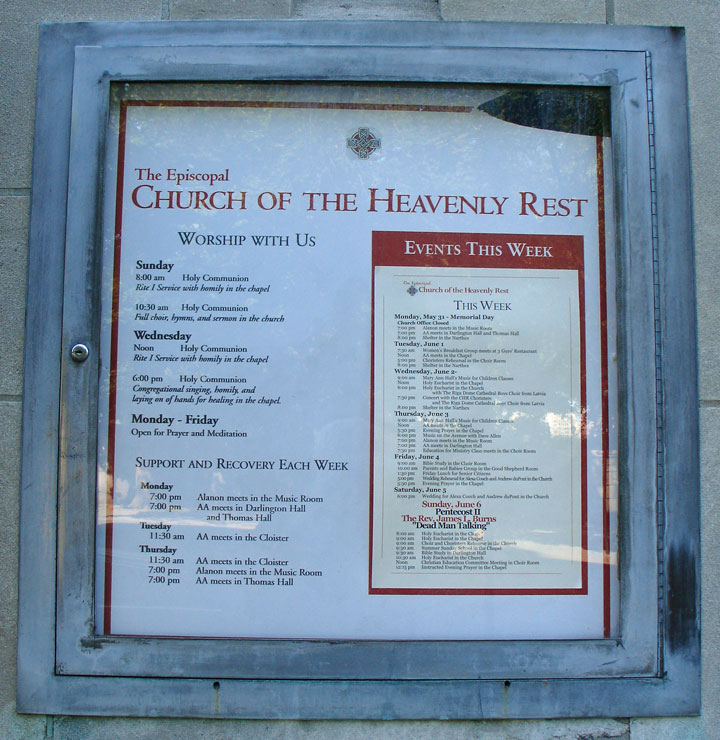

Solomon R. Guggenheim Museum

Solomon R. Guggenheim Museum
The Solomon R. Guggenheim Museum (often referred to as "The Guggenheim") is a well-known museum located on the Upper East Side of Manhattan in New York City, United States. It is the permanent home to a renowned collection of Impressionist, Post-Impressionist, early Modern, and contemporary art and also features special exhibitions throughout the year. Designed by Frank Lloyd Wright, it is one of the 20th century's most important architectural landmarks.
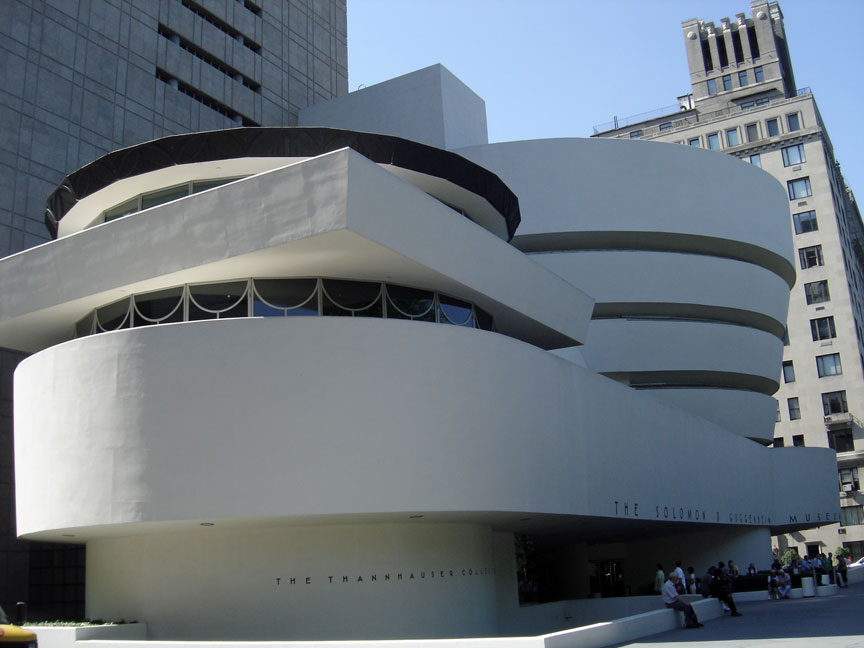
The museum opened on October 21, 1959, and was the second museum opened by the
Solomon R. Guggenheim Foundation. It recently underwent an extensive, three-year
renovation.
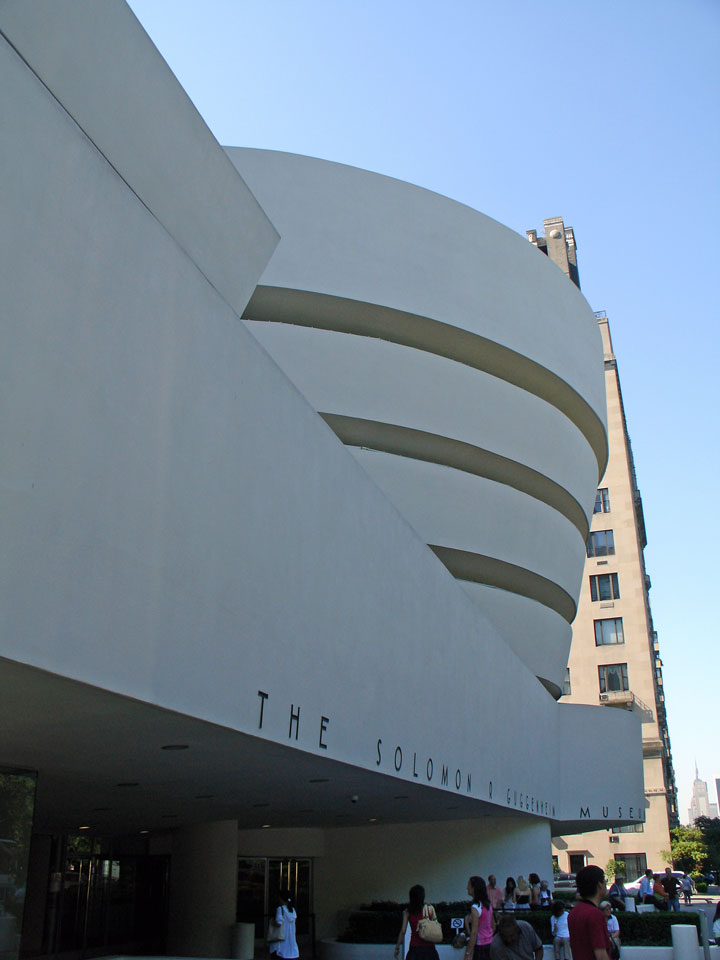
Guided by his art adviser, the German painter Hilla Rebay, Solomon Guggenheim
began to collect works by nonobjective artists in 1929. (For Rebay, the word
"nonobjective" signified the spiritual dimensions of pure abstraction.)
Guggenheim first began to show his work from his apartment, and as the
collection grew, he established The Solomon R. Guggenheim Foundation in 1937.
Guggenheim and Rebay opened the foundation for the "promotion and encouragement
and education in art and the enlightenment of the public." Chartered by the
Board of Regents of New York State, the Foundation was endowed to operate one or
more museums; Solomon Guggenheim was elected its first President and Rebay its
Director.
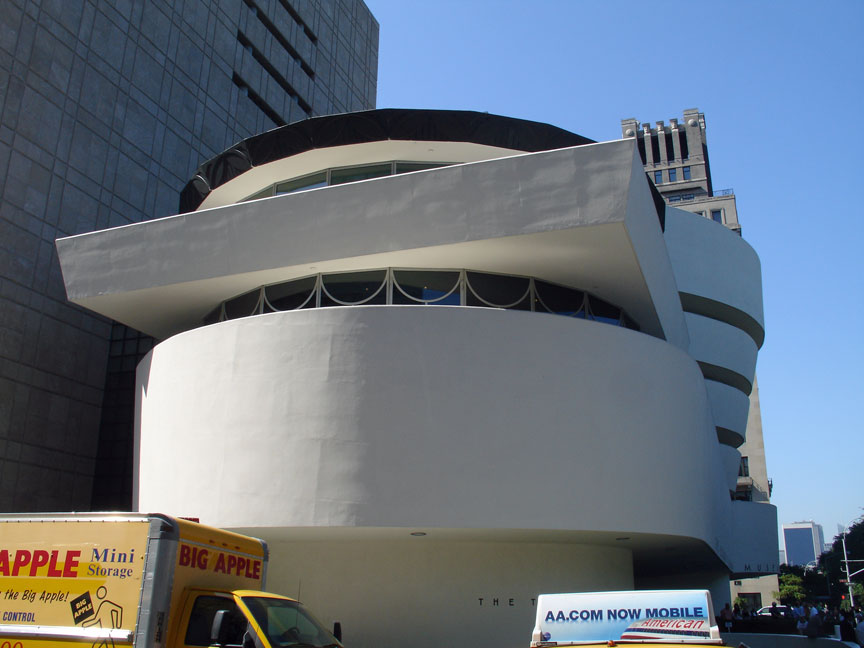
In 1939, the Guggenheim Foundation's first museum, "The Museum of Non-Objective
Painting", opened in rented quarters at 24 East Fifty-Fourth Street in New York
and showcased art by early modernists such as Rudolf Bauer, Hilla Rebay, Wassily
Kandinsky, and Piet Mondrian. During the life of Guggenheim's first museum,
Guggenheim continued to add to his collection, acquiring paintings by Marc
Chagall, Robert Delaunay, Fernand Léger, Amedeo Modigliani and Pablo Picasso.
The collection quickly outgrew its original space, so in 1943, Rebay and
Guggenheim wrote a letter to Frank Lloyd Wright pleading him to design a
permanent structure for the collection. It took Wright 15 years, 700 sketches,
and six sets of working drawings to create the museum. While Wright was
designing the museum Rebay was searching for sites where the museum would
reside. Where the museum now stands was its original chosen site by Rebay which
is at the corners of 89th Street and Fifth Avenue (overlooking Central Park). In
the fall of 1959, ten years after the death of Solomon Guggenheim and six months
after the death of Frank Lloyd Wright the Museum opened its doors for the first
time to the general public.
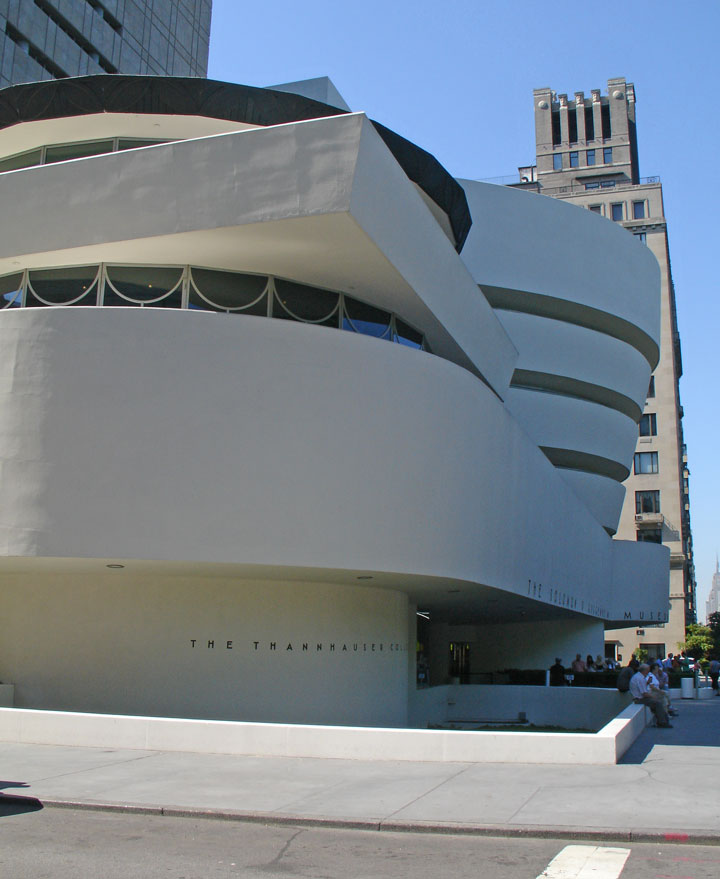
The distinctive building, Wright's last major work, instantly polarized
architecture critics upon completion, though today it is widely revered. From
the street, the building looks approximately like a white ribbon curled into a
cylindrical stack, slightly wider at the top than the bottom. Its appearance is
in sharp contrast to the more typically boxy Manhattan buildings that surround
it, a fact relished by Wright who claimed that his museum would make the nearby
Metropolitan Museum of Art "look like a Protestant barn."
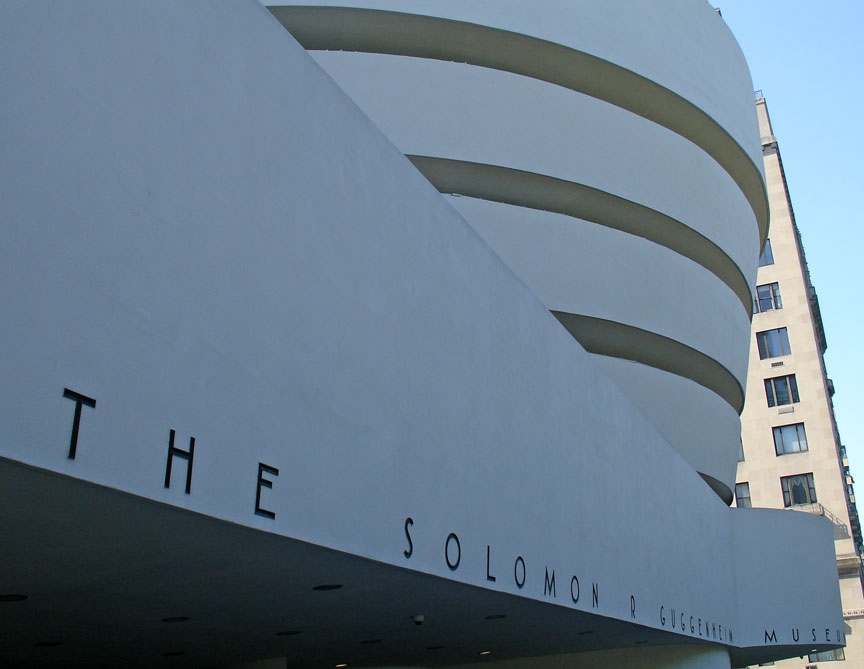
Internally, the viewing gallery forms a gentle helical spiral from the main
level up to the top of the building. Paintings are displayed along the walls of
the spiral and also in exhibition space found at annex levels along the way.
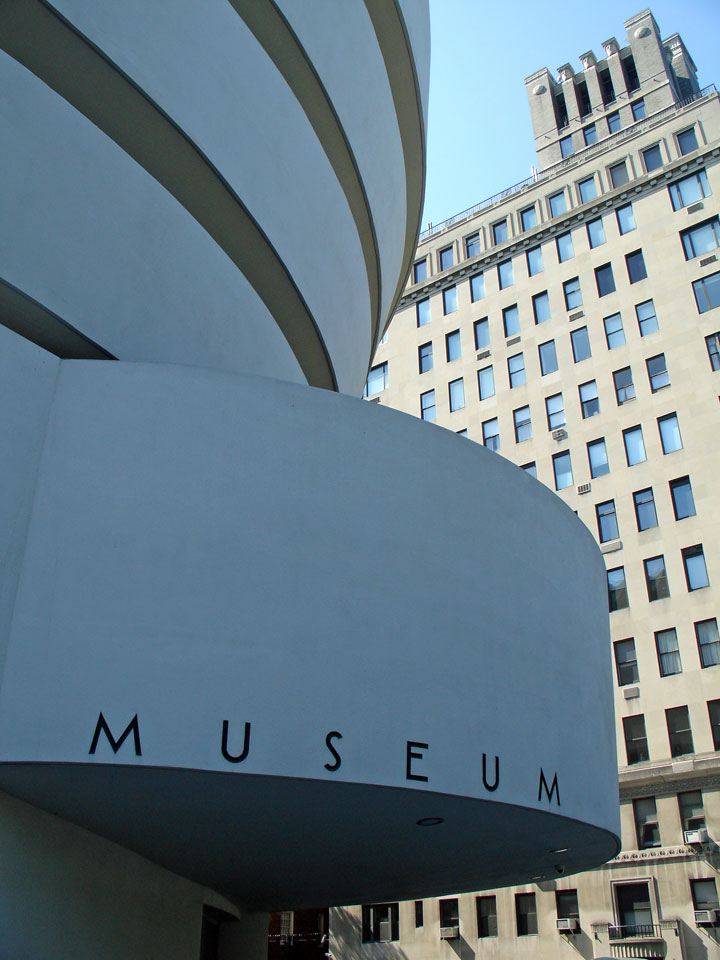
Most of the criticism of the building has focused on the idea that it
overshadows the artworks displayed within, and that it is particularly difficult
to properly hang paintings in the shallow windowless exhibition niches that
surround the central spiral. Although the rotunda is generously lit by a large
skylight, the niches are heavily shadowed by the walkway itself, leaving the art
to be lit largely by artificial light. The walls of the niches are neither
vertical nor flat (most are gently concave), meaning that canvasses must be
mounted proud of the wall's surface. The limited space within the niches means
that sculptures are generally relegated to plinths amid the main spiral walkway
itself. Prior to its opening, twenty-one artists, including Willem de Kooning
and Robert Motherwell, signed a letter protesting the display of their work in
such a space.
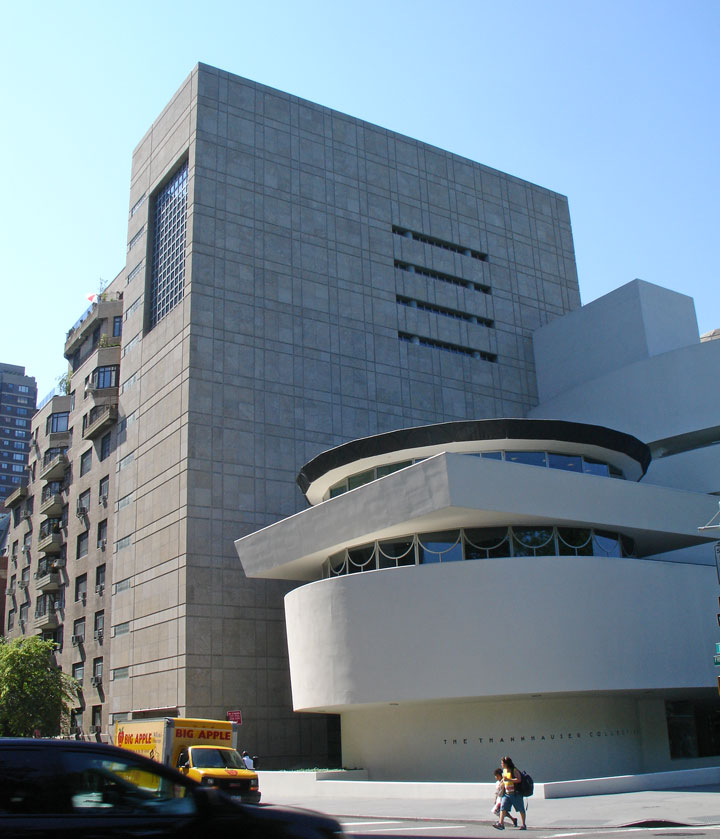
adjoining rectangular tower
In 1992, the building was supplemented by an adjoining rectangular tower, taller than the original spiral, designed by the architectural firm of Gwathmey Siegel & Associates Architects. By that point, the building had become iconic enough that this augmentation of Wright's original design was itself controversial.

In October 2005, Lisa Dennison, a longtime Guggenheim curator, was appointed
director of the Solomon R. Guggenheim Museum in New York. Dennison resigned in
July 2007 to work at the auction house Sotheby's.
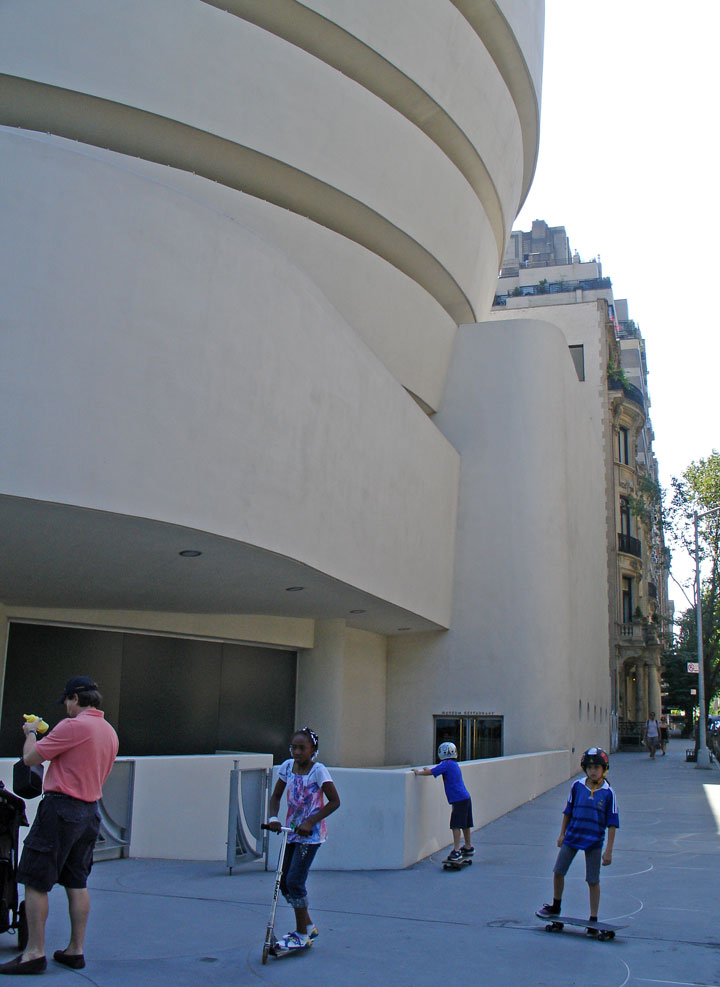
From October 2005 to February 2008, Thomas Krens remained director of the
Solomon R. Guggenheim Foundation, having won a decisive victory over billionaire
philanthropist and board member Peter Lewis. A significant contributor to the
Guggenheim Foundation, Lewis resigned in 2005 in a dispute with the board over
the direction and leadership of the Foundation. Despite this, Krens and Lewis
nevertheless continue to agree in describing the building itself as "the most
important piece of art in the collection."
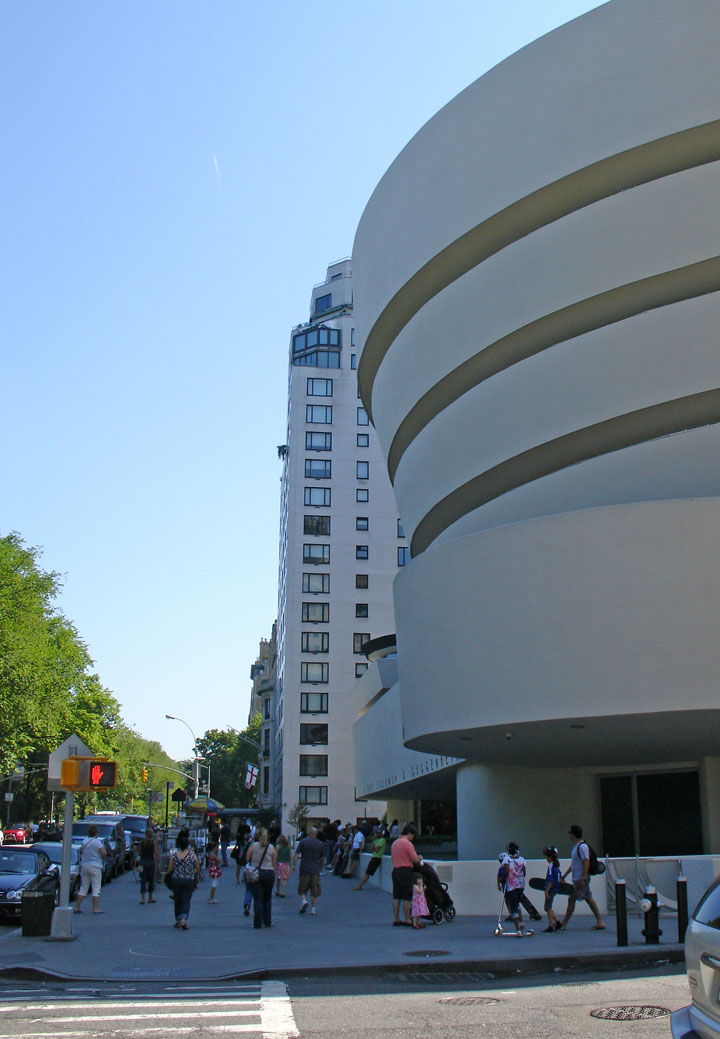
In February 2008, Krens stepped down as the Director of the Guggenheim
Foundation, but remains an advisor to the Guggenheim's international expansion
projects. The search for a new Director, who will head both the New York museum
and the Foundation was recently completed with the Board's appointment of
Richard Armstrong––formerly director of Pittsburgh's Carnegie Museum of Art––as
its fifth director.

Between September 2005 and July 2008, the Guggenheim Museum underwent a
significant exterior restoration.
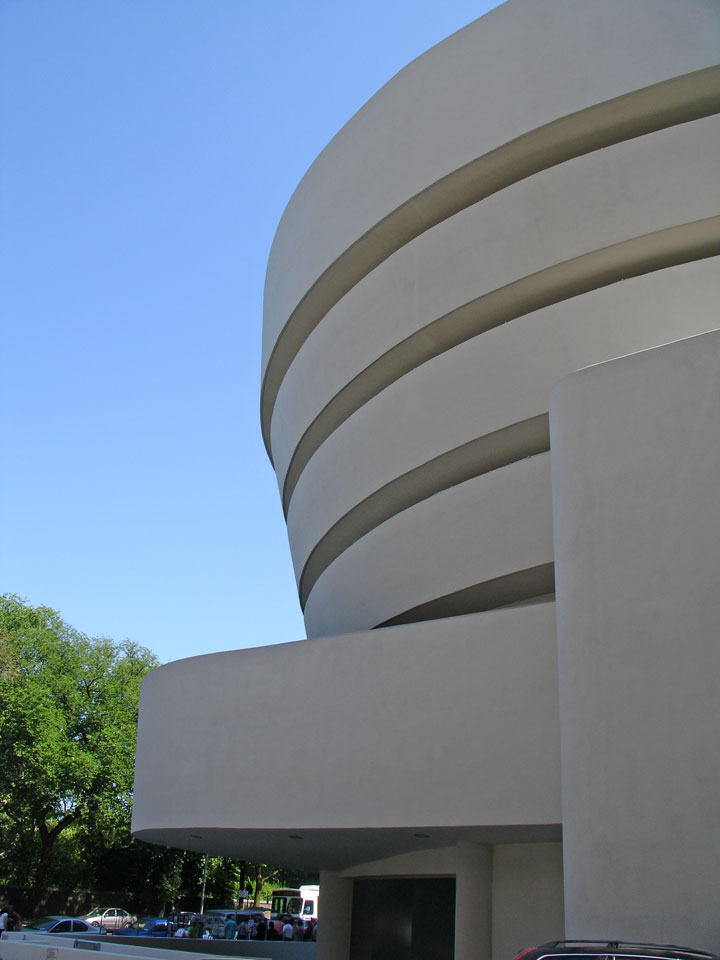
In the first phase of this project, a team of restoration architects, structural
engineers, and architectural conservators worked together to create a
comprehensive assessment of the building's current condition that determined the
structure to be fundamentally sound.

gates covering the trash
This initial condition assessment
included:
* the removal of 11 coats of paint from the original surface, revealing hundreds
of cracks caused over the years, primarily from seasonal temperature
fluctuations
* detailed monitoring of the movement of selected cracks over 17 months
* impact-echo technology, in which sound waves are sent into the concrete and
the rebound is measured in order to locate voids within the walls
* extensive laser surveys of the exterior and interior surfaces, believed to be
the largest laser model ever compiled
* core drilling to gather samples of the original concrete and other
construction materials
* testing of potential repair materials.
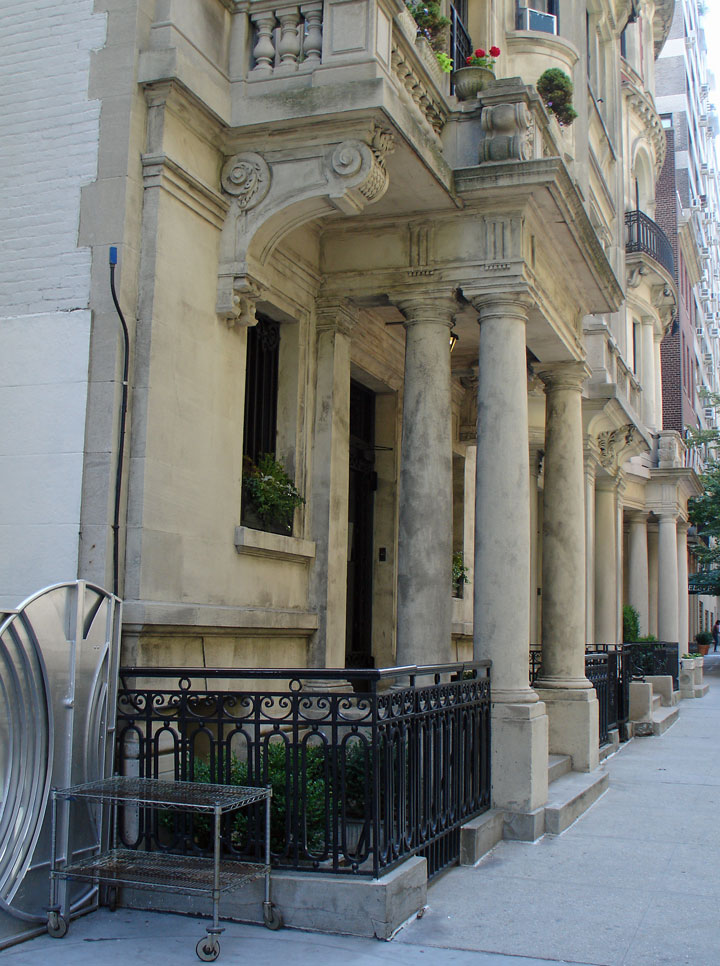
adjacent buildings
Much of the interior of the building was restored during the 1992 renovation and addition by Gwathmey Siegel and Associates Architects. The 2005-2008 restoration primarily addresses the exterior of the original building and the infrastructure. This includes the skylights, windows, doors, concrete and gunite facades and exterior sidewalk, as well as the climate-control. The goal will be to preserve as much significant historical fabric of the Solomon R. Guggenheim Museum as possible, while accomplishing necessary repairs and attaining a suitable environment for the building's continuing use as a museum.
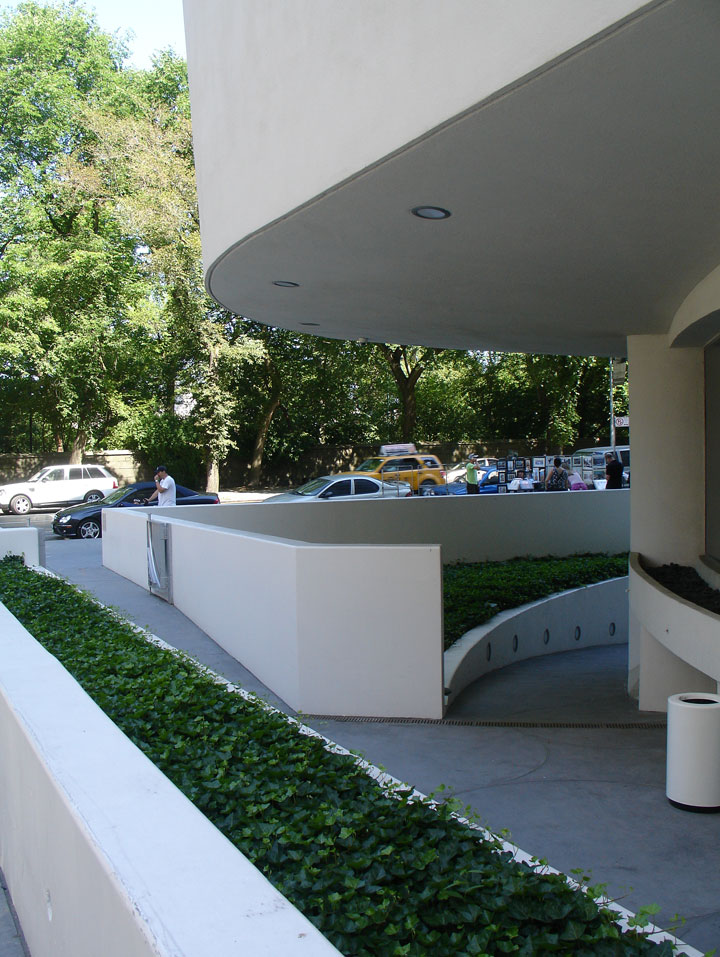
On September 22, 2008, friends and supporters of the Guggenheim gathered in New
York to mark the completion of the 3-year renovation of the Frank Lloyd
Wright-designed Museum. New York City Mayor Michael R. Bloomberg officiated at
the celebration that culminated, just after sunset, with the premiere of artist
Jenny Holzer's tribute For the Guggenheim, a work commissioned in honor of Peter
B. Lewis, who was a major benefactor in the Museum restoration project. Other
supporters of the $29 million dollar restoration included the Board of Trustees
of the Solomon R. Guggenheim Foundation, and the Department of Cultural Affairs
of the City of New York. Additional support was provided by the State of New
York and MAPEI Corporation. The museum was registered as a National Historic
Landmark on October 6, 2008.
Text from Wikipedia
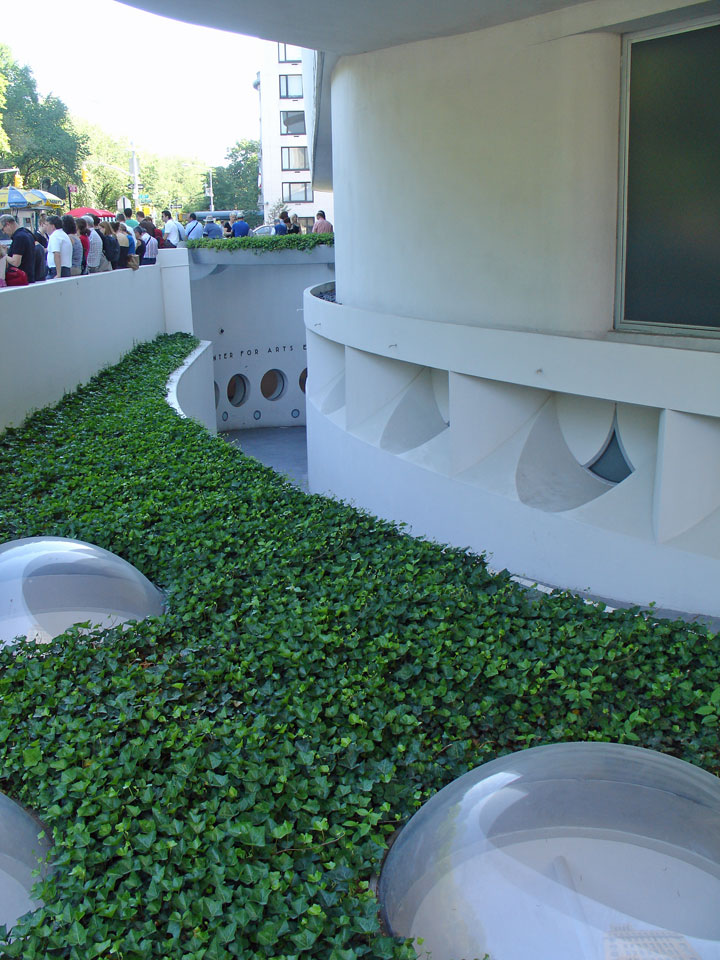
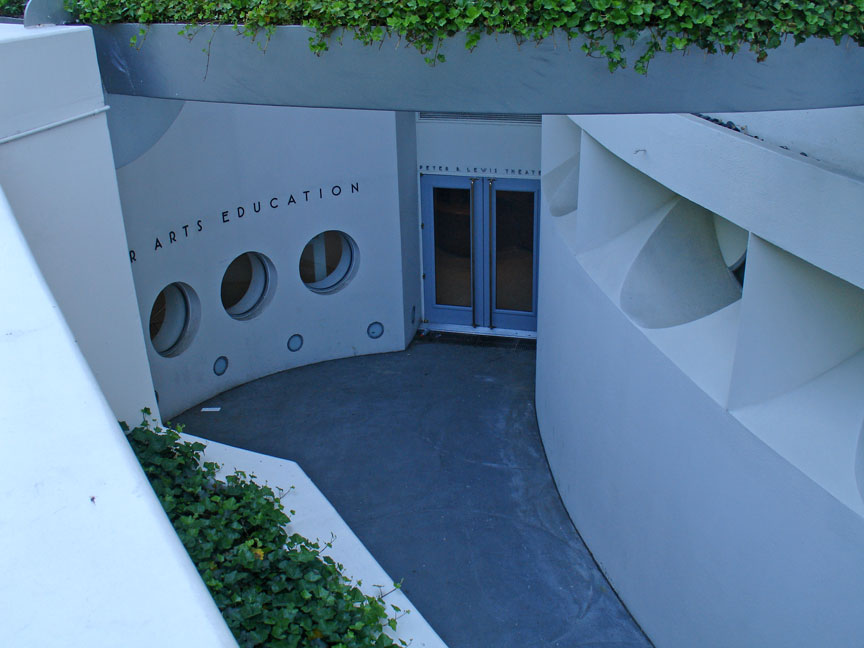



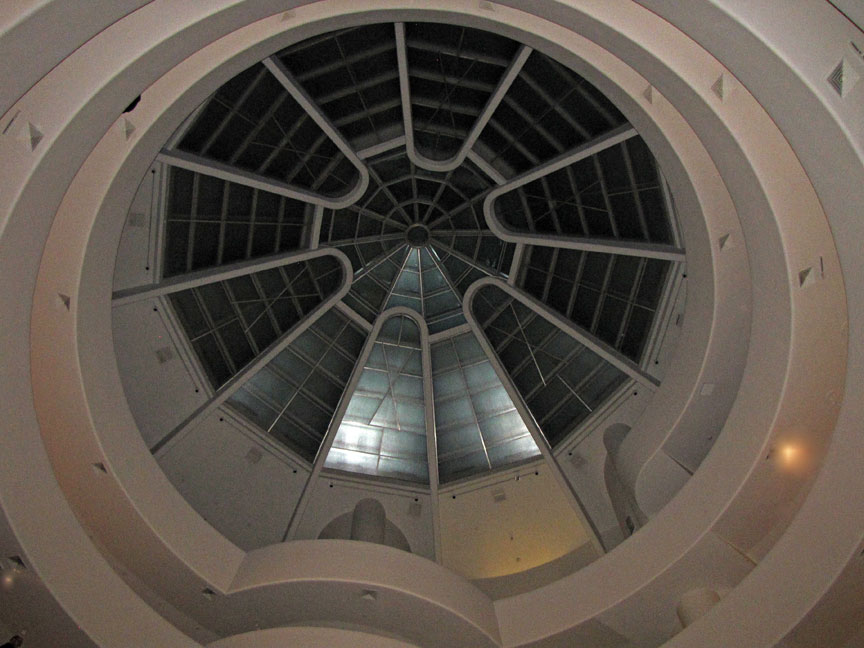
The skylight in the center of the museum


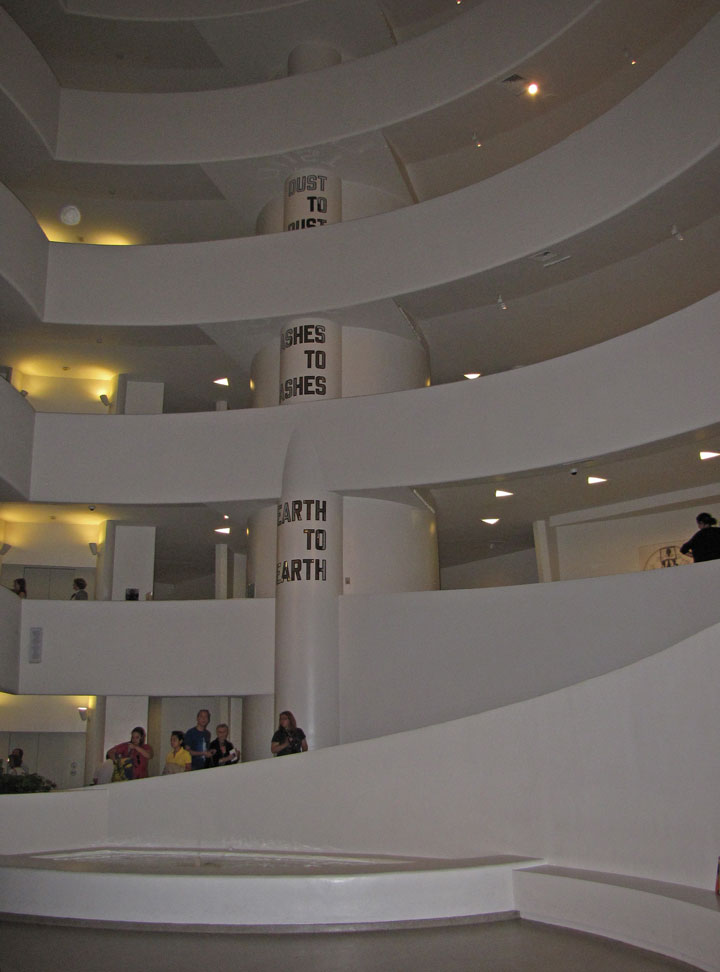
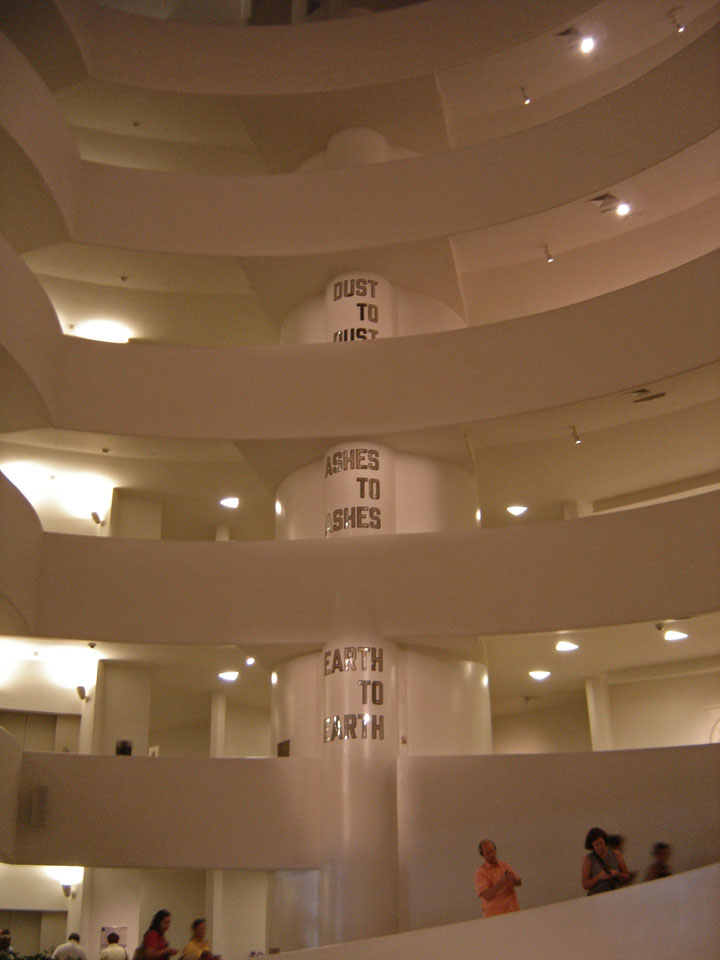
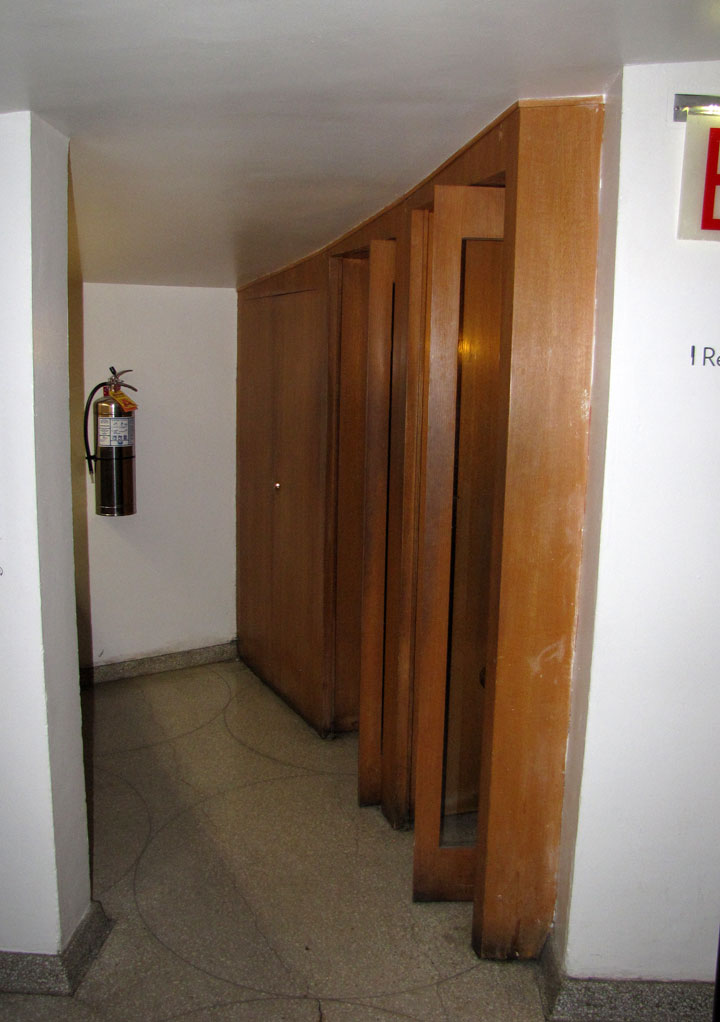
telephone booths

The skylight in the center of the museum
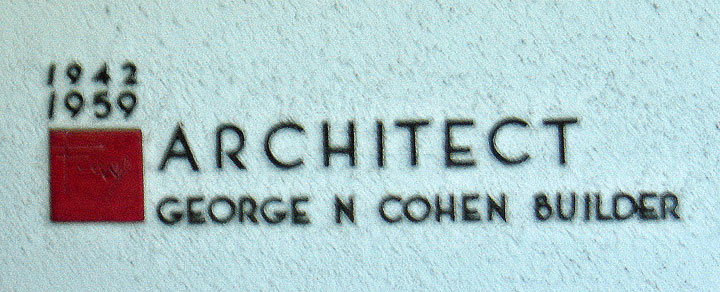
Wright's seal

nearby church
